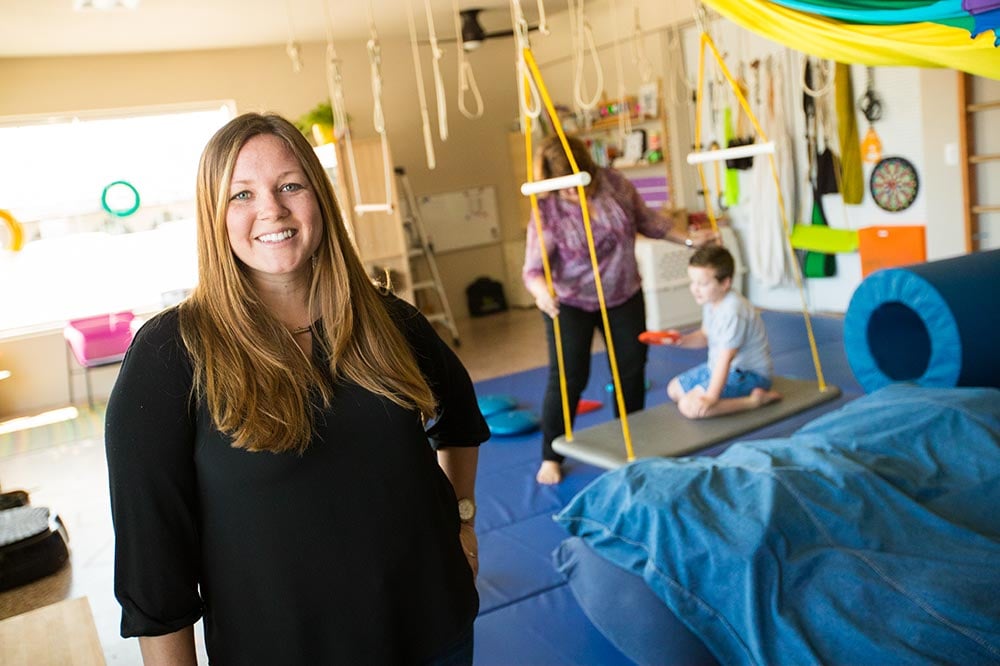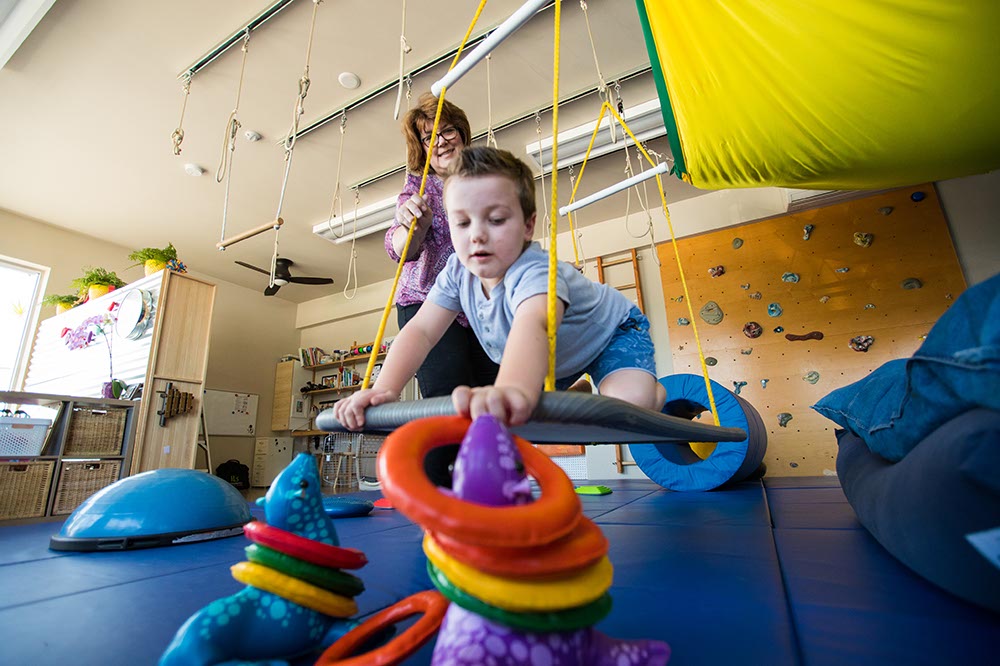Ot slp Continuing Professional Development on Asd

Autism spectrum disorder (ASD) is a neurodevelopmental condition characterized by impaired social communication skills, restricted and repetitive behaviors, and isolated areas of interest. Approximately one in 54 children in the United States are diagnosed with ASD, which can be recognized as early as age two but is typically detected after age four.
Early diagnosis and intervention can greatly improve outcomes for people with autism. 1 Occupational therapy (OT) is a primary mode of intervention. This post explores the benefits of occupational therapy for autism, as well as the unique role that OT plays in treating ASD.
What Is Occupational Therapy?
Occupational therapy is a field of healthcare that holistically treats people who have injuries, disabilities, or other conditions, including autism. In this practice, occupational therapists (OTs) help patients develop, recover, or maintain their ability to engage in meaningful daily activities, including communicating appropriately with others.
OTs begin the process by communicating directly with the patient and family to understand the patient's individual needs. They assess the patient's physical, sensory, emotional, and cognitive abilities before developing reasonable goals and a treatment plan. The OT then works with the patient for several sessions or longer term, helping them make progress toward their goals.
The Role of Occupational Therapy in Treating ASD
Occupational therapists evaluate the current developmental levels of children and adults with autism, aiming to improve their ability to self-regulate emotions and participate in social interactions. 2 Through interventions, OTs can help people with autism build on their areas of strength and overcome their limitations.
Ways Occupational Therapists Evaluate ASD
To evaluate a patient with autism, the OT may use screening tools such as an autism checklist, a sensory profile, the Childhood Autism Rating Scale (CARS), or diagnosis criteria set forth in the fifth edition of the Diagnostic and Statistical Manual of Mental Disorders (DSM-V). 3 When observing the patient, an OT will consider the following skills:4,5
- Social: interactions with others, emotion regulation, behavior, desire for personal space, eye contact, aggression
- Communication: speech, non-verbal communication
- Cognitive: attention span, stamina
- Sensory: responses to stimuli, sensory seeking, sensory defensiveness
- Motor : posture, balance, manipulation of small objects
Common Occupational Therapy Interventions for Autism
After completing the evaluation, the occupational therapist works with the patient and family to develop an intervention plan and treatment goals. Occupational therapy interventions for autism may include:6,7
- Focusing on sensory integration and sensory-based strategies.
- Emphasizing mental health and wellness.
- Implementing emotional development and self-regulation strategies and programs.
- Organizing peer groups, social participation, and play activities.
- Improving self-care routines to help with daily activities such as bathing, feeding, and grooming.
- Working on motor development.
- Supporting an adolescent's transition into adulthood and helping them build skills to enter the workforce.
- Using cognitive behavioral approaches to support positive behaviors.
Benefits of Occupational Therapy for Autism
The main goal of occupational therapy for autism is to improve the patient's quality of life. Through interventions, occupational therapists can help people with ASD gain independence and:8
- Focus on academic tasks.
- Communicate appropriately.
- Maintain and foster relationships.
- Work with others to achieve a common goal or purpose.
- Learn to delay gratification.
- Express emotions in a healthy, productive way and regulate arousal level.
- Become more independent and confident.
- Feel less anxious.
How to Find an Occupational Therapist
Contacting the patient's school or physician is a good place to start to find a qualified occupational therapist. When choosing an OT to work with a child or adult with autism, look for someone who is willing to:9
- Conduct a comprehensive diagnostic evaluation and create written goals for treatment.
- Offer one-on-one treatment in a sensory-rich setting.
- Provide an intensive treatment program that encourages family members to participate.
- Ask questions, and encourage the patient and family to do the same.
Occupational therapy helps people at all points along the autism spectrum develop the skills they need to communicate better and participate in meaningful daily activities. OT practitioners are uniquely positioned to provide treatment that can help individuals with autism succeed. Becoming an occupational therapist is a rewarding career path that can lead you to help people of all ages manage physical and cognitive disabilities and differences. If this direction interests you, check out the entry-level graduate degree programs in occupational therapy offered by the University of St. Augustine for Health Sciences.
The University of St. Augustine for Health Sciences (USAHS) offers hands-on Master of Occupational Therapy (MOT) and Doctor of Occupational Therapy (OTD) degrees. Practice with mock patients in our state-of-the-art simulation centers and learn anatomy with our high-tech tools. Prepare for clinical practice with patients across the lifespan, as well as advanced roles in research, practice leadership, and policymaking. Residential and Flex (online/weekend-focused) paths are available. We also offer an online Post-Professional Doctor of Occupational Therapy (PPOTD) program, which is designed for working clinicians and healthcare educators who need flexibility in earning their degree.
- Lonnie Zwaigenbaum et al., "Early Identification and Interventions for Autism Spectrum Disorder," Pediatrics, Oct. 2015: https://pediatrics.aappublications.org/content/136/Supplement_1/S1 [↩]
- Lisa Crabtree and Barbara Demchick, "Occupational Therapy's Role with Autism," American Occupational Therapy Association, 2018: https://www.aota.org/-/media/corporate/files/aboutot/professionals/whatisot/cy/fact-sheets/autism%20fact%20sheet.pdf [↩]
- Payal Pawar, "Occupational Therapy for Autism – Assessment and Intervention," Occupational Therapy {OT}, last updated April 23, 2017: https://occupationaltherapyot.com/occupational-therapy-autism/ [↩]
- WebMD, "Benefits of Occupational Therapy for Autism," reviewed Nov. 12, 2018: https://www.webmd.com/brain/autism/benefits-of-occupational-therapy-for-autism [↩]
- Crabtree, "Occupational Therapy's Role." [↩]
- Ibid. [↩]
- Center for Autism Research, "Occupational Therapy for Children on the Autism Spectrum," last updated May 29, 2020: https://www.carautismroadmap.org/the-role-of-pediatric-occupational-therapy-for-children-with-asd/ [↩]
- Applied Behavior Analysis Programs Guide, "How Does Occupational Therapy Benefit A Child with Autism?": https://www.appliedbehavioranalysisprograms.com/faq/how-does-occupational-therapy-benefit-a-child-with-autism/ [↩]
- STAR Institute, "Choosing an Occupational Therapist": https://www.spdstar.org/basic/choosing-an-occupational-therapist [↩]
Source: https://www.usa.edu/blog/occupational-therapy-for-autism/


0 Response to "Ot slp Continuing Professional Development on Asd"
Post a Comment